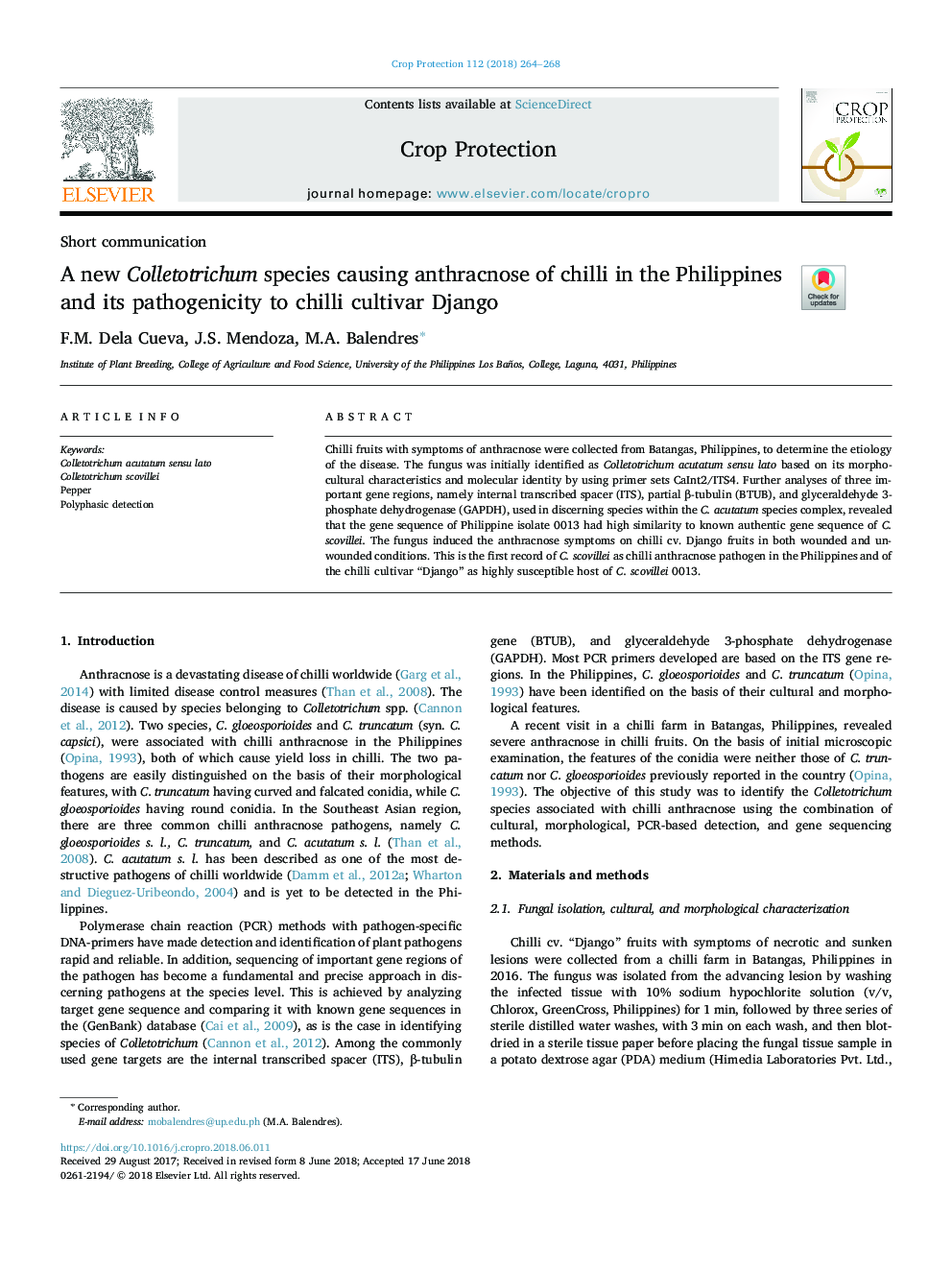| Article ID | Journal | Published Year | Pages | File Type |
|---|---|---|---|---|
| 8877980 | Crop Protection | 2018 | 5 Pages |
Abstract
Chilli fruits with symptoms of anthracnose were collected from Batangas, Philippines, to determine the etiology of the disease. The fungus was initially identified as Colletotrichum acutatum sensu lato based on its morpho-cultural characteristics and molecular identity by using primer sets CaInt2/ITS4. Further analyses of three important gene regions, namely internal transcribed spacer (ITS), partial β-tubulin (BTUB), and glyceraldehyde 3-phosphate dehydrogenase (GAPDH), used in discerning species within the C. acutatum species complex, revealed that the gene sequence of Philippine isolate 0013 had high similarity to known authentic gene sequence of C. scovillei. The fungus induced the anthracnose symptoms on chilli cv. Django fruits in both wounded and unwounded conditions. This is the first record of C. scovillei as chilli anthracnose pathogen in the Philippines and of the chilli cultivar “Django” as highly susceptible host of C. scovillei 0013.
Keywords
Related Topics
Life Sciences
Agricultural and Biological Sciences
Agronomy and Crop Science
Authors
F.M. Dela Cueva, J.S. Mendoza, M.A. Balendres,
